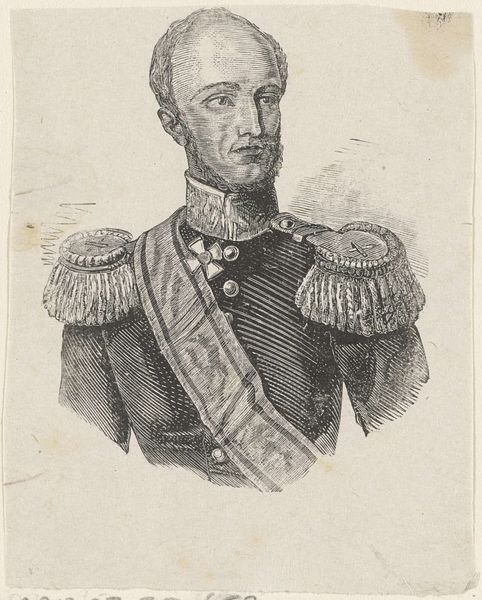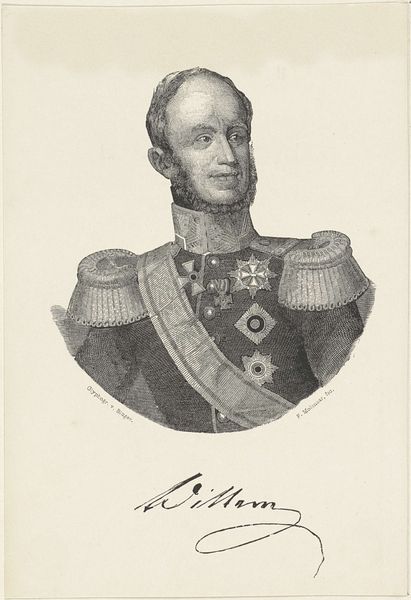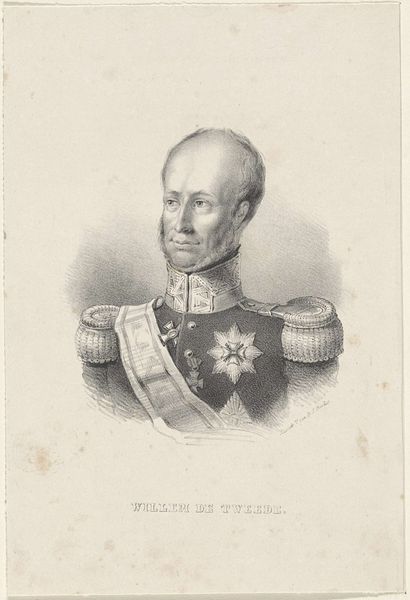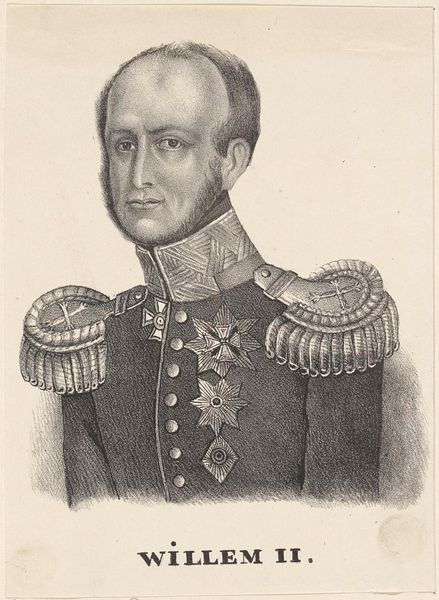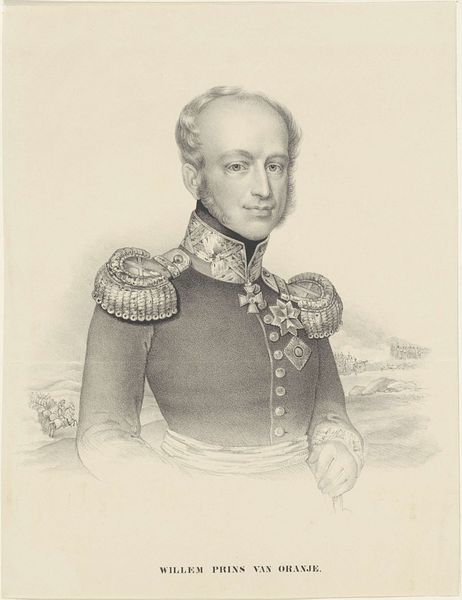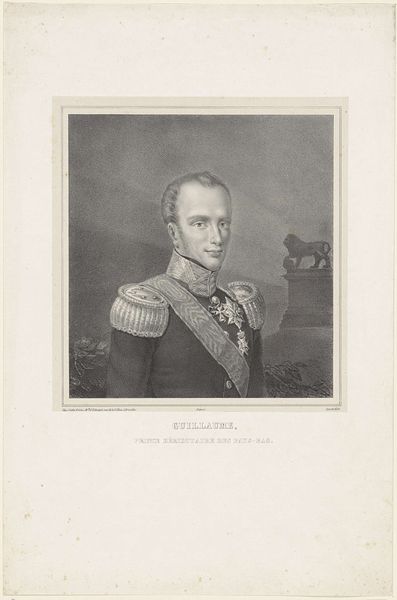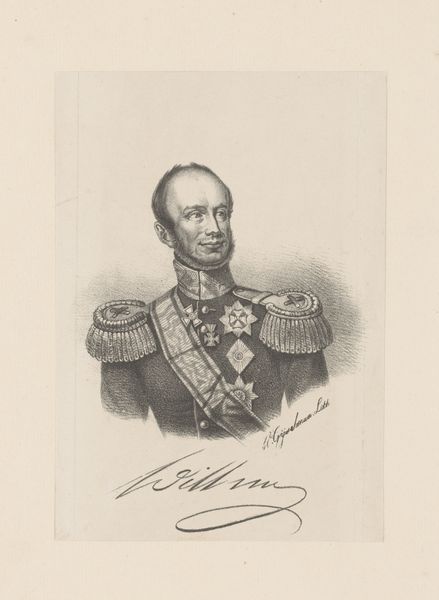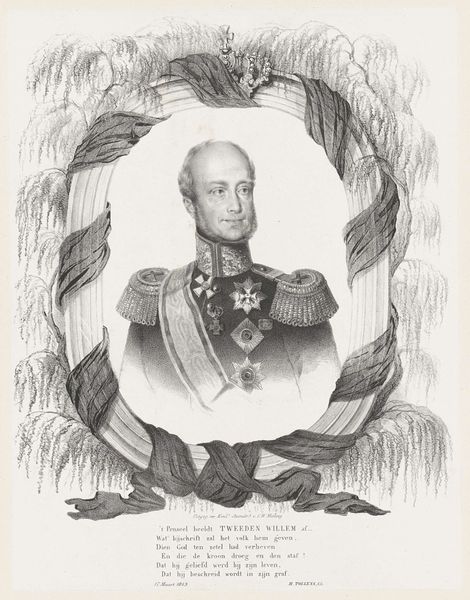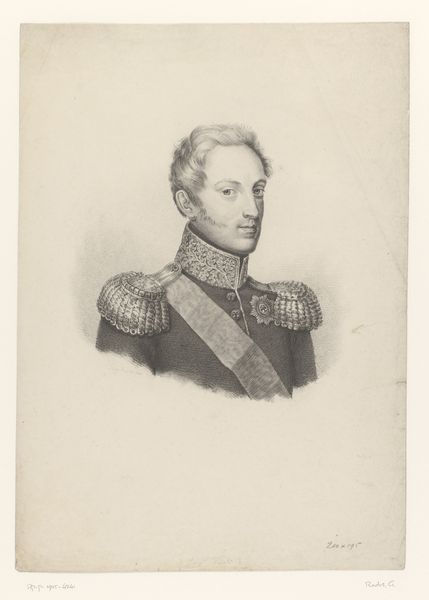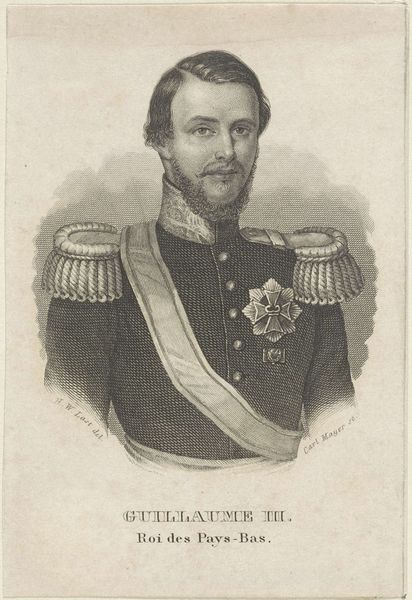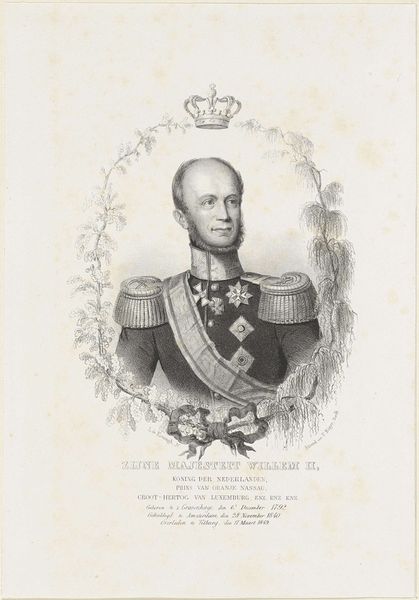
Portret van Willem II, koning der Nederlanden 1840 - 1842
0:00
0:00
franciscusbernarduswaanders
Rijksmuseum
drawing, lithograph, print
#
portrait
#
pencil drawn
#
drawing
#
neoclacissism
#
lithograph
# print
#
pencil sketch
#
historical photography
#
portrait reference
#
pencil drawing
Dimensions: height 277 mm, width 212 mm
Copyright: Rijks Museum: Open Domain
Curator: There's something haunting in this portrait—a fragility offset by the rigid formality of his uniform. Editor: This is a lithograph from around 1840 to 1842, portraying Willem II, King of the Netherlands, rendered by Franciscus Bernardus Waanders. Look how meticulously the details are etched! The sharp lines suggest a man trying to project strength during a period of immense change. Curator: Yes, I see it in his eyes. There is something both commanding and uncertain. It speaks volumes about the burden of leadership in the 19th century. The visual language is neoclassical in its pursuit of order but it struggles against a rising tide of Romantic sentiment. Editor: Absolutely, it is a moment captured on the cusp. While neoclassical ideals were still championed by the elite, new social forces were building up and challenging the very idea of monarchy. This portrait isn't just about Willem II; it embodies the anxieties of an entire class. Curator: The medals and adornments act almost like protective talismans—symbols that create a tangible connection between the ruler and the cultural ideas of leadership. You can almost feel the psychological weight pressing down on him. Editor: I agree. By portraying him bedecked in signs of office, the artist, consciously or not, underlines the tension inherent in the King's public role. Was he venerated? Respected? Feared? It’s an interesting dialogue on power and public perception. Curator: It is fascinating to witness such a vivid representation of inner emotionality mediated through layers of symbolism. Waanders captures not only what was presented but also what may have been repressed. Editor: Indeed, considering how lithography allowed for the relatively rapid production of images, portraits like these became vital instruments for shaping the public image of the monarchy and negotiating a rapidly evolving socio-political landscape. It's much more than just an individual likeness, then, isn’t it? Curator: Exactly, the tension between man and monarch is quite palpable, something I hadn’t fully considered until now. Editor: I find myself appreciating anew the complex history behind such seemingly straightforward portraits.
Comments
No comments
Be the first to comment and join the conversation on the ultimate creative platform.
